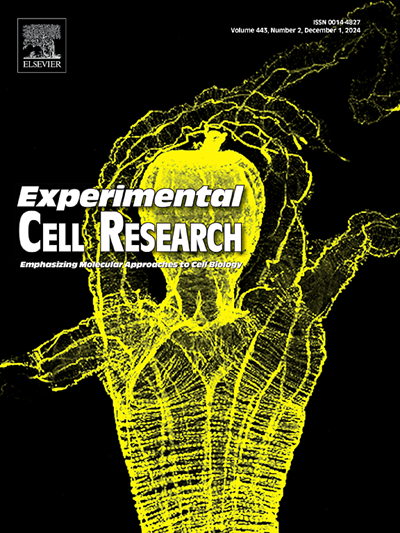乳酸通过TWIST1乳酸化作用促进肝癌细胞上皮-间质转化。
IF 3.3
3区 生物学
Q3 CELL BIOLOGY
引用次数: 0
摘要
乳酸水平升高会增加肝癌进展的风险。然而,乳酸促进肝癌进展的机制仍然知之甚少。上皮-间充质转化(epithelial -mesenchymal transition, EMT)的特征是上皮细胞极性和细胞间粘附的丧失,导致间充质样表型的获得,被广泛认为是肝癌进展的关键因素。TWIST1 (Twist Family BHLH Transcription Factor 1)在EMT的诱导过程中起核心作用。在这里,我们研究了乳酸在肝癌中促进EMT的作用及其潜在的调节机制。高水平的乳酸显著促进肝癌细胞的EMT进展。在机制上,乳酸诱导TWIST1在体内和体外的乳酸化。突变分析证实,赖氨酸33 (Lysine 33, K33)是TWIST1乳酸化的主要位点。此外,细胞分离和荧光素酶报告基因检测结果表明,TWIST1-K33R突变体通过抑制核输入和转录活性来破坏EMT过程。因此,我们的研究结果为乳酸盐在EMT在肝癌发病机制中的调节作用提供了新的见解。此外,靶向乳酸驱动的TWIST1的乳酸化可能会促进肝癌的治疗策略。本文章由计算机程序翻译,如有差异,请以英文原文为准。
Lactate promotes the epithelial-mesenchymal transition of liver cancer cells via TWIST1 lactylation
Elevated lactate levels increase the risk of liver cancer progression. However, the mechanisms by which lactate promotes liver cancer progression remain poorly understood. Epithelial-mesenchymal transition (EMT), characterized by the loss of epithelial cells polarity and cell-cell adhesion, leading to the acquisition of mesenchymal-like phenotypes, is widely recognized as a key contributor to liver cancer progression. TWIST1 (Twist Family BHLH Transcription Factor 1) plays a central role in inducing EMT. Here, we investigated the role of lactate in promoting EMT in liver cancer and the underlying regulatory mechanisms. High levels of lactate significantly promoted EMT progression in liver cancer cells. Mechanistically, lactate-induced lactylation of TWIST1 in vivo and in vitro. Mutation assay confirmed that Lysine 33 (K33) is the major site of TWIST1 lactylation. Moreover, cell fractionation & luciferase reporter assay results identified that TWIST1-K33R mutant impaired the EMT process via inhibiting nuclear import and the transcriptional activity. Thus, our findings provide novel insights into the regulatory role of lactate in EMT in liver cancer pathogenesis. Additionally, targeting of lactate-driven lactylation of TWIST1 may boost the therapeutic strategy for liver cancer.
求助全文
通过发布文献求助,成功后即可免费获取论文全文。
去求助
来源期刊

Experimental cell research
医学-细胞生物学
CiteScore
7.20
自引率
0.00%
发文量
295
审稿时长
30 days
期刊介绍:
Our scope includes but is not limited to areas such as: Chromosome biology; Chromatin and epigenetics; DNA repair; Gene regulation; Nuclear import-export; RNA processing; Non-coding RNAs; Organelle biology; The cytoskeleton; Intracellular trafficking; Cell-cell and cell-matrix interactions; Cell motility and migration; Cell proliferation; Cellular differentiation; Signal transduction; Programmed cell death.
 求助内容:
求助内容: 应助结果提醒方式:
应助结果提醒方式:


